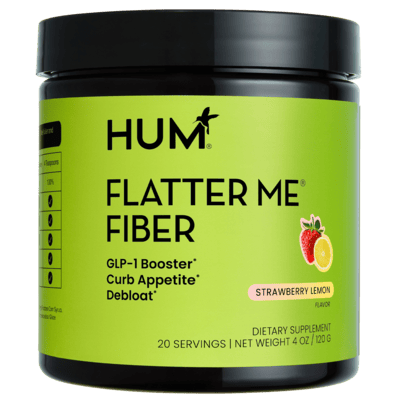Perimenopause can feel like an uphill battle for women. One moment, you’re dealing with relentless hot flashes; the next, you’re frustrated by sudden weight gain that won’t budge. Mood swings, fatigue, and blood sugar fluctuations can make this transition even more challenging. If you’ve been searching for solutions, you might be surprised to learn that GLP-1 agonists—medications originally designed for diabetes and weight management—could be a game-changer for perimenopausal symptoms. These treatments are gaining attention not just for their ability to regulate blood sugar but also for their potential to ease some of the most frustrating aspects of perimenopause. Let’s explore how they work and why they might be worth considering as a solution.
How GLP-1 Agonists Help with Perimenopause

GLP-1 (glucagon-like peptide-1) agonists work by mimicking the natural GLP-1 hormone in our body, which regulates blood sugar, appetite, and metabolism. These medications, such as semaglutide (Ozempic, Wegovy), tirzepatide (Mounjaro, Zepbound), and liraglutide (Saxenda, Victoza), have shown promising effects in managing some of the most frustrating aspects of perimenopause.
Insulin Sensitivity
As estrogen levels fluctuate during perimenopause, many women become more insulin resistant, increasing the risk of type 2 diabetes and metabolic disorders. This resistance can lead to energy crashes, sugar cravings, and difficulty maintaining stable blood sugar levels. Insulin resistance can also contribute to stubborn weight gain, particularly around the abdomen, making it even more challenging to maintain a healthy body composition.
However, GLP-1 medications like Wegovy and Ozempic help the body use insulin more effectively by increasing insulin sensitivity after eating and slowing glucose production in the liver. By improving how the body processes sugar, these medications can help prevent the metabolic disruptions that often come with perimenopause. Improving insulin regulation not only reduces blood sugar spikes and crashes but also minimizes sugar cravings and fatigue. Over time, control over insulin sensitivity can lower the risk of developing type 2 diabetes and support overall metabolic health during perimenopause.
Weight Management
One of the biggest challenges that women face during perimenopause is weight gain, especially around the abdomen area. Hormonal fluctuations can slow the metabolism, increasing fat storage and making it more difficult to maintain a healthy weight. Lower estrogen levels also play a role in where fat is distributed, leading to more weight gain around the midsection as opposed to other areas. This affects body composition and increases the risk of metabolic disorders, such as insulin resistance and cardiovascular disease.
GLP-1 medications can help with weight loss by promoting feelings of fullness and reducing appetite, leading to an overall decrease in one’s calorie intake. It also slows gastric emptying, keeping you satisfied for longer periods. As a result, appetite control combined with improved metabolic function helps support weight management, reducing perimenopausal weight gain.
These medications also help curb the cycle of sugar cravings and energy crashes that can often lead to overeating. Altogether, women find that using GLP-1’s alongside a balanced diet and regular exercise makes it easier to maintain a healthy weight during perimenopause, reducing the physical and emotional strain that weight fluctuations can bring.
Hot Flashes
Hot flashes are one of the most well-known—and often most bothersome—symptoms of perimenopause, occurring in 75% of women. These sudden surges of heat, sweating, and discomfort are the result of fluctuations in estrogen levels, affecting the body’s temperature regulation system. They’re known to disrupt sleep, impact daily activities, and leave many searching for relief.
While research is still developing, some studies suggest that GLP-1 medications may play a role in reducing the frequency and severity of hot flashes. GLP-1’s effects on the central nervous system and metabolic regulation may contribute to temperature stability. GLP-1 agonists help regulate neurotransmitters involved in thermoregulation, balancing the body’s temperature and resulting in fewer (and less intense) hot flashes during perimenopause. Additionally, since blood sugar fluctuations can sometimes exacerbate hot flashes, the improved glucose control offered by GLP-1 medications may indirectly reduce the severity.
Hormonal Balance
Perimenopause is caused by fluctuating hormone levels, leading to symptoms like mood swings, brain fog, fatigue, and irregular menstrual cycles. Although GLP-1 medications are not a direct hormonal therapy, they can indirectly support hormonal balance by improving insulin regulation and reducing inflammation—both of which can impact overall hormone health.
Inflammation is known to play a role in hormonal imbalances, and GLP-1s have been shown to reduce systemic inflammation, which may help alleviate symptoms like mood swings and metabolic issues commonly experienced. Additionally, by supporting metabolic health and weight management, GLP-1s may help reduce the severity of perimenopausal symptoms related to hormonal imbalances, such as fatigue and brain fog. Maintaining stability in blood sugar levels may also contribute to fewer extreme mood fluctuations, making the emotional symptoms of perimenopause more manageable.
FAQ’s
Are GLP-1s safe to use for perimenopause?
While these medications are FDA-approved for diabetes and weight loss, their use for perimenopause is considered off-label. Always consult a healthcare provider to see if this option is appropriate based on your individual health needs.
How long does it take to see results with GLP-1s during perimenopause?
Results can vary. Some women notice reduced appetite and better energy levels within the first few weeks, while improvements in weight and mood may take a few months. It’s a gradual process that works best when combined with lifestyle changes like diet, exercise, and stress management.
Can I use GLP-1 medications during menopause too?
Yes. Many women continue to experience symptoms well into menopause, and the benefits of GLP-1s—like weight control and improved blood sugar regulation—can still be valuable during that time.
Perimenopause is a complex phase of life, but GLP-1 medications have been shown to offer positive support for some of its most uncomfortable symptoms. From aiding in weight management and improving insulin sensitivity to potentially easing hot flashes and promoting hormonal balance, these medications may be valuable for women seeking relief. As research continues, GLP-1s are working to become a more widely recognized option for managing perimenopause effectively. If you’re considering this approach, consulting a healthcare provider can help determine if GLP-1 therapy is right for you.

How to Balance Hormones: An Easy Guide to What They Are and What They Do, Including GLP-1 and Insulin

GLP-1 and Muscle Loss: What You Need to Know Plus, 5 Tips to Keep It Healthy

The Best Supplements to Mitigate Bloating and Promote Weight Management








